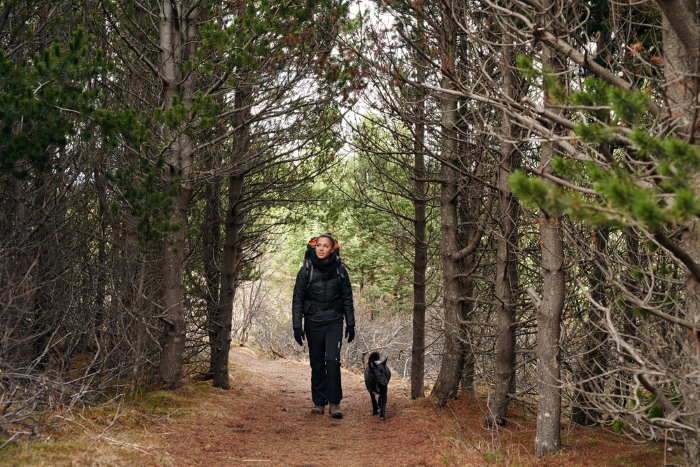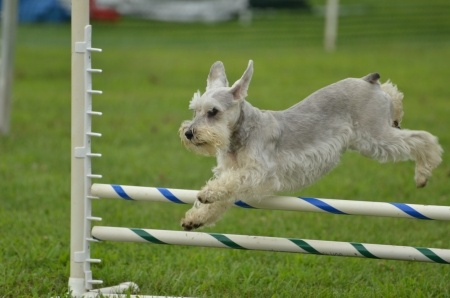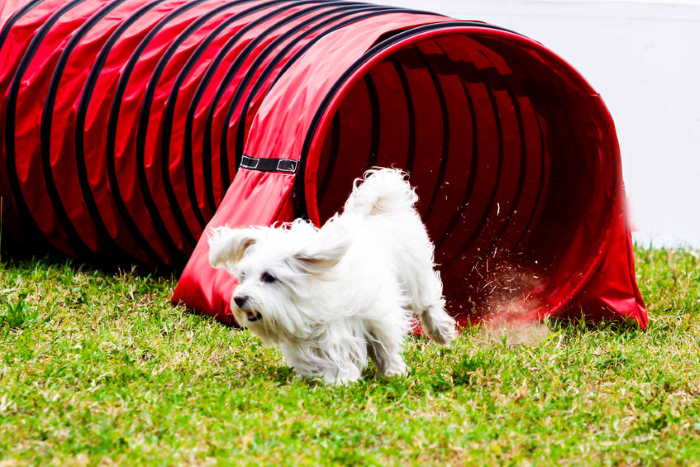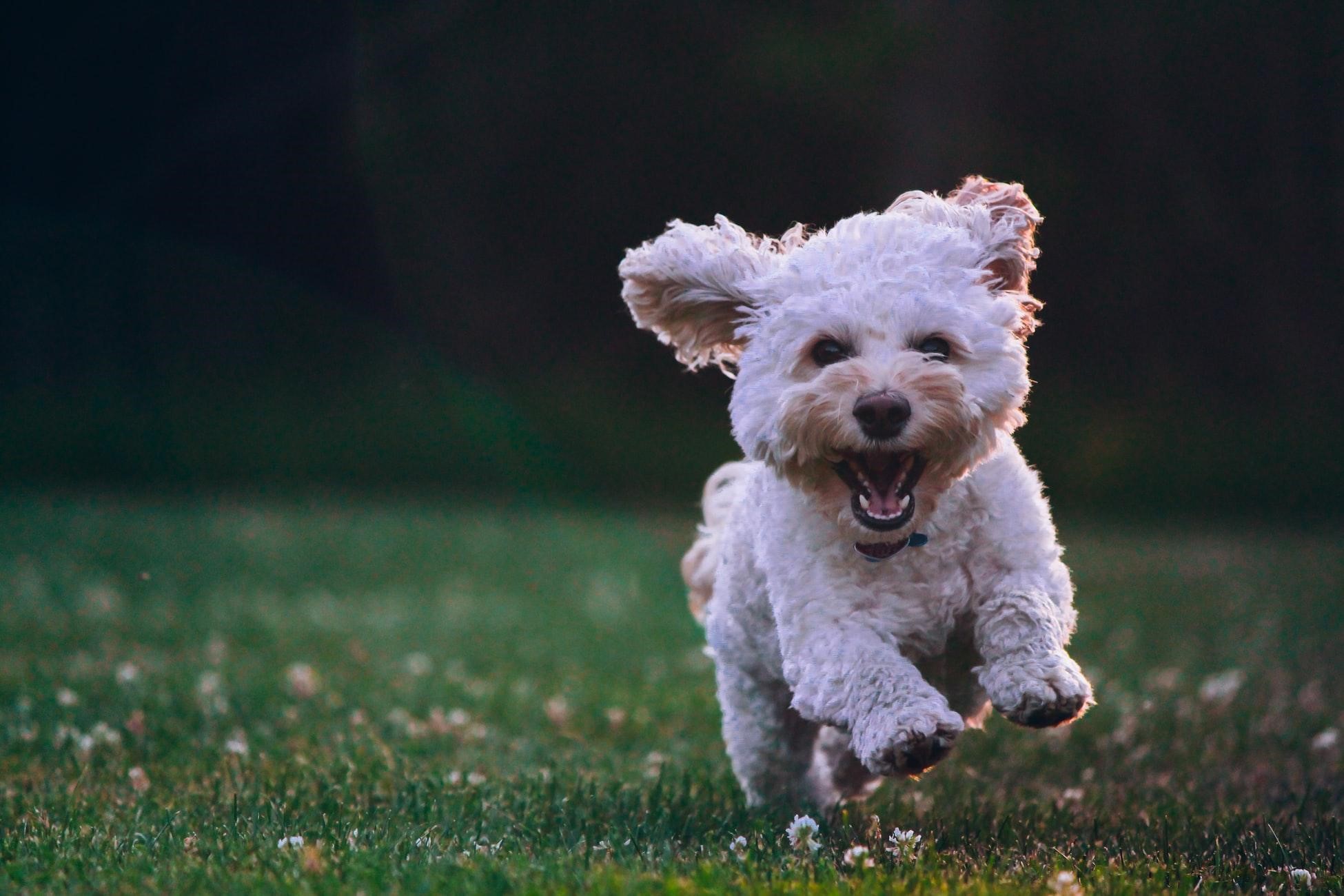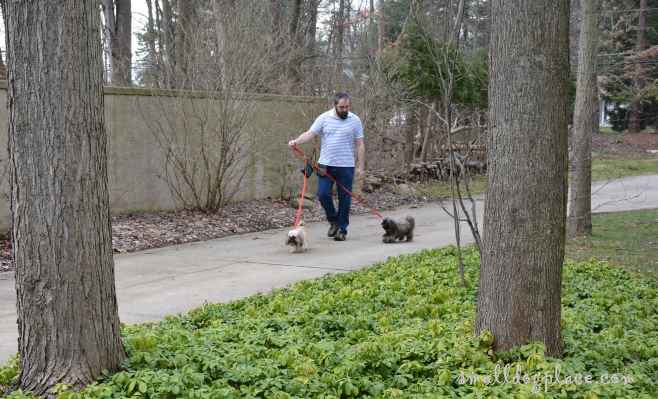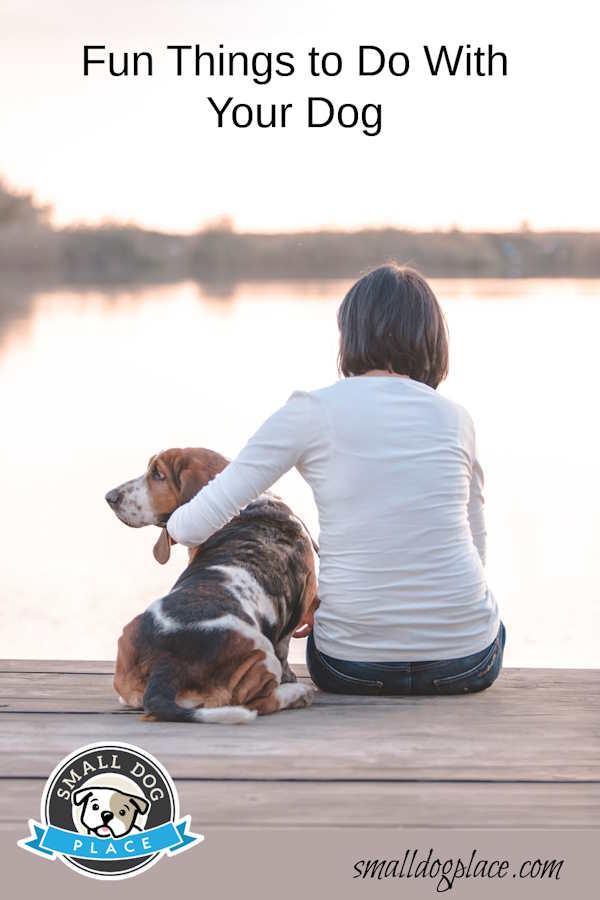- Small Dog Place Home
- Things to Do with Dogs
Fun Things To Do With Your Dog
Fun Things to Do With Your Dog By Janice Jones
There are so many fun things to do with your dog, that this page could get massively long. After reading some of our ideas, please take a moment and spotlight your own dog and the activities you like to do with him or her.
Here are a few ideas to get your creative juices churning, then scroll down to the end of the page, where we list even more ideas. Tell your dog's story for all to read.
Fun Things to Do With Your Dog
Ten Tips for Sailing With Pets on Board
Whether you’re heading out on a family sailing trip or climbing aboard a yacht for a longer trip, you may need to consider how to handle and care for your pet while you’re away.
Of course, you can always leave them at home, find a pet-sitter or have them stay in a doggy-day-care facility – but bringing your furry friend with you can be a great idea!
Read About Sailing With Pets
Paws on the Trails: Backpacking with Small Dogs
Best Dog Sports for Small Breed Dogs
If you’ve got a small breed dog full of energy, you might wonder what sports you can engage in with your beloved companion.
While it‘s true that not all sports are suitable for small dogs as this might harm their joints or they simply don’t have the physical capability to do the job (Schutzhund as a sport comes to mind), there definitely are some.
Dog Agility: An Introduction for the Rest of Us
Exercise is an obvious perk in agility, but there is also mental stimulation, flexibility, strengthening of muscles.
There's also creating new habits, opportunities to improve commands through chaining, improved confidence, even aggression rehabilitation.
What I enjoy most in agility with my dog is the bond through body language. When getting mobile in this way with my dog, there is information to be learned by both of us.
10 Reasons Why Creating an Instagram Profile for Your Dog is a Great Idea
It is no wonder that Instagram is one of the most popular social platforms since it erases borders and ways we can connect with other people.
Still, the most fantastic part of getting social is creating your Instagram pet account where you can share all the pictures and videos along with useful tips and experiences that are dear to your heart.
So if you are already on social media, consider making your dog a star, definitely one of many fun things to do with your dog.
Traveling with Small Dogs: 14 Tips to Keep You Safe
Traveling with Small Dogs: 14 Tips to Keep You Safe
Through the years, more dog owners are choosing to bring their pets during travel. A pet survey in 2012 reveals that 85% of pet owners choose dogs over other animals for them to travel with.
Tips for the Perfect Hotel Stays With Your Dog
 Dog-friendly Hotel Tips
Dog-friendly Hotel TipsTips for Finding a Dog-Friendly Hotel Room
It's very difficult for a dog-owner to leave their best friend when they go out to travel. Most people find traveling with their pets inconvenient and difficult.
A lot of them believe finding good lodging will be difficult for them as they are traveling with a dog. You might be surprised to hear that a lot of hotels are actually dog-friendly.
Exercises to Do With Your Dog
7 Exercises you can do with your dog: Ways to Get You Active
Is inactivity plaguing you and your canine pal? Don't despair. This post, "7 Ways to Exercise With Your Dog" will give you some fun ways to get off the couch and get active.
Have a Safe Beach Day with Your Dog
An afternoon at the beach can be a blast, but taking your dog to the seashore can be an exhausting assignment, requires extra care, and some preparation to keep unnecessary hassles at bay.
Anything that can harm you at the beach can also be hazardous for your companions, such as sunburn, jellyfish, burly waves, sharp sea shells, and broken glasses.
Dog Friendly Road Trip for an Epic Vacation
Going on a dog friendly road trip is an excellent way to see the country and just enjoy what it has to offer without feeling the rush of getting to the next destination and traveling with a dog, your faithful companion, just makes the trip even better.
However, traveling with your pooch entails that you have to do some degree of prepping before you do so. Dogs are sensitive animals and can get stressed easily if anything is out of place and when you are on a road trip, they get literally plucked out of what they are used to.
Prepare Your Dog for Hiking
Preparing a week-long escapade in the wild with your dog requires common sense. So does a simple overnight trip in a near forest.
Indeed, when away from home for more than a daily walk, the dog owner is the dog’s guardian. In other words, you must be prepared for all situations that are likely to happen, especially accidents and emergencies.
Tips for Taking a Small Dog Up a Mountain
One of the most rewarding things you can do to spend time with your four-legged friend, is take your beloved dog along with you on a hike up a mountain.
While you may feel that this activity is well suited to larger breeds such as Golden Retrievers, German Shepherds etc, you may feel that it could be irresponsible to take a smaller breed on such a trip.
Plane Travel With Dogs: Tips to Make Your Trip Safe and Fun
Tips to Make Your Next Plane Travel Safe and Fun for Both You and Your Dog
Is plane travel with dogs on your horizon? Maybe your bucket list? This guest post by Provides a comprehensive guide for your next plane trip.
Small dog parents are lucky because they are able to fly with their pets anywhere. Probably one of the best things about owning a small dog is that they can comfortably travel in a crate that fits under the plane seat in front of you.
Indoor Dog Games to Keep Your Dog Entertained
Indoor Dog Activities to Do With Your Dog (In the Winter)
Do you struggle to fit a proper walk into your schedule during the winter? Or does your pet get too cold for long walks?
You are not alone. Reduced daylight hours and cold weather mean it’s often not possible to give your pet a long walk each day. This is especially difficult if you work during the day, as it’s probably dark when you get home.
Moving With Your Dog: Tips to Preserve Your Sanity

OK so this one may not be the most fun things to do with your dog, but it is the beginning of a new adventure. Check out these tips to assure that everything goes smoothly and by the end of the day, you will be enjoying yourself with your dog in your new residence.
Dog Friendly Attractions in Santa Cruz, CA to Check Out

Dog Friendly Attractions in Santa Cruz
Santa Cruz is a very wonderful coastal town in Northern California, and it is celebrated for its fantastic boardwalk.
There is an altogether different side to this drowsy little shoreline town that incorporates shrouded shorelines, redwood forests with a portion of the world's tallest trees and charming minimal midtown with bunches of good eats.
Santa Cruz is so amicable to dogs, and it is only 1.5 hours from San Francisco.
Exercising and Bonding with your Small Dog: 7 tips for Success
 Exercising and Bonding with your Small Dog is one of many fun things to do with your dog.
Exercising and Bonding with your Small Dog is one of many fun things to do with your dog.Most dogs are happy to head outside and let off some steam, but the right workout will differ depending on your dog’s age and breed.
Special care should, therefore, be taken with these pups during warmer months. Older dogs and those with joint issues and heart and other conditions will also be less able to withstand heavy exercise.
Exercising and Bonding with your Small Dog
Other Fun Things to Do With Your Dog
Here's our ultimate list of things you can do with your dog.
- Visit an outlet mall
- Go shopping at your local pet store.
- Participate in an obedience class
- Visit a dog park
- Get involved in agility training
- Take your dog on a boat ride
- Eat on the patio of a dog friendly restaurant
- Visit a dog friendly hotel
- Find a dog friendly beach
- Volunteer at a shelter or rescue
- Attend an outdoor concert
- Find opportunities to attend sports events with your dog
- Visit a nursing home
- Get your dog's picture taken with Santa or the Easter Bunny
- Take your dog to work day
- Have a glass of wine or a beer at a dog friendly pub
- Visit a pet expo in your area
- Schedule a spa day for your dog
- Attend an outdoor festival with your dog
- Visit a farmers market
- Go camping with your dog
- Go RVing with your dog
- Teach your dog a new trick or command
- Throw a Birthday Party for your dog
- Visit a vinyard with your dog
- Take a scenic train ride
- Visit a pet friendly historic site
- Visit a National Park
- Dress up and go trick or treating on Halloween
- Take a day trip or just enjoy a ride with the windows down.
- Go for ice cream with your dog
- Visit a pumpkin patch
- Pick berries at a pick your own farm
- Go fishing with your dog
- Take your dog on a canoe trip
- Take a few photos of your dog doing his favorite thing and post your dog's story
- Head to Starbucks for a Puppuccinos
- Teach your dog the names of all of her toys
- Provide a spa day at home complete with a soothing warm bath and a pedicure
- Visit the world's largest pet store in Lancaster, PA
- Go out for lunch at a fast food drive through.
- Go to a flea market
- Check out a local parade with your dog
- Attend a dog show that allows canine spectators
- Call ahead if you're planning to take your dog to a store but many will allow dogs such as Lowes, Home Depot, and Tractor Supply
- Go to an amusement park
- Attend a local carnival
- Watch a dog movie together
- Take a ferry ride with your dog
- Snuggle up and take an afternoon nap
AND, don't forget to watch the Puppy Bowl together
Fun Things to Do With Your Dog
Pin for Future Reference
About Janice (author and voice behind this site)
Having lived with dogs and cats most of her life, Janice served as a veterinary technician for ten years in Maryland and twelve years as a Shih Tzu dog breeder in Ohio.
Her education includes undergraduate degrees in Psychology with a minor in biology, Early Childhood Education, and Nursing, and a master's in Mental Health Counseling.
She is a lifelong learner, a dog lover, and passionate about the welfare of animals. Her favorite breed for over 50 years has been the Shih Tzu, but she has also lived with Poodles, Maltese, Yorkshire Terriers, Beagles, English Bulldogs, Carin Terriers, and a Cocker Spaniel.
When not writing, reading, and researching dog-related topics, she likes to spend time with her eight Shih Tzu dogs, husband, and family, as well as knitting and crocheting. She is also the voice behind Miracle Shih Tzu and Smart-Knit-Crocheting
Does This Article Deserve Your Thumbs Up?
We always appreciate your support and encouragement. Your thumbs up means so much to us. Please like this article.
If you find this page or any page on Small Dog Place Helpful, or useful in anyway, I'd love it if you would click the small heart found on the bottom right of each page.
You can also share or bookmark this page -- just click on the:

Free Monthly Newsletter
Sign Up for Our Free Newsletter and get our Free Gift to You.
my E-book, The Top 10 Mistakes People Make When Choosing a Dog (and how to avoid them)

